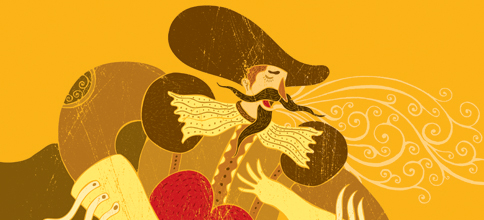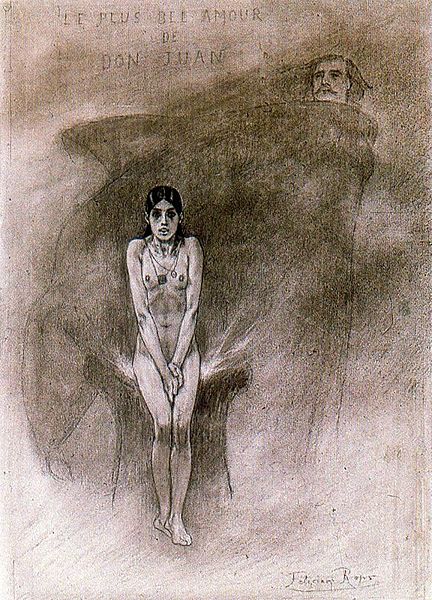Don Juan

Don Juan first showed up in Tirso de Molina's play El burlador de Sevilla y convidado de piedra. Usually this is translated as The Trickster of Seville and the Stone Guest but "burlador" has been translated as "ladykiller," "seducer," "joker," "rake" and "playboy" - take your pick. The play was published around 1630, but it was performed as early as 1616.
In the play, Don Juan is a nobleman from Seville, and Tirso sets the action in 14th century Naples, Tarragona and Seville. Tirso was a priest and while there is a strong "Castilian" moralistic and satirical edge to this play (things don't end well for the hero), it's also true that Tirso has a great comic sense of irony and theatricality - how else to react to the string of seductions and the supernatural turn of events.
Tirso's plays lapsed into obscurity until they were republished around 1840, but Don Juan thrived without him - in literally hundreds of works - Molière's Dom Juan ou le Festin de pierre (Dom Juan or The Feast with the Statue), Mozart's Don Giovanni, and Byron's poem Don Juan to name a few.

This biting image of Don Juan was created by Félicien Rops from Namur, Belgium, to illustrate the short story Le Plus Bel Amour de don Juan, which is one of 6 short stories in Barbey d'Aurevilly's controversial book Les Diaboliques (first published in 1874). The image is from (I think) an 1884 edition and it is ambiguous, no? Does it condemn Don Juan for taking advantage, or is he offering protection? Can it be compared with this image? For another painting of Don Juan, see The Stone Guest second from the bottom of this page.
For another image by Rops - here.
